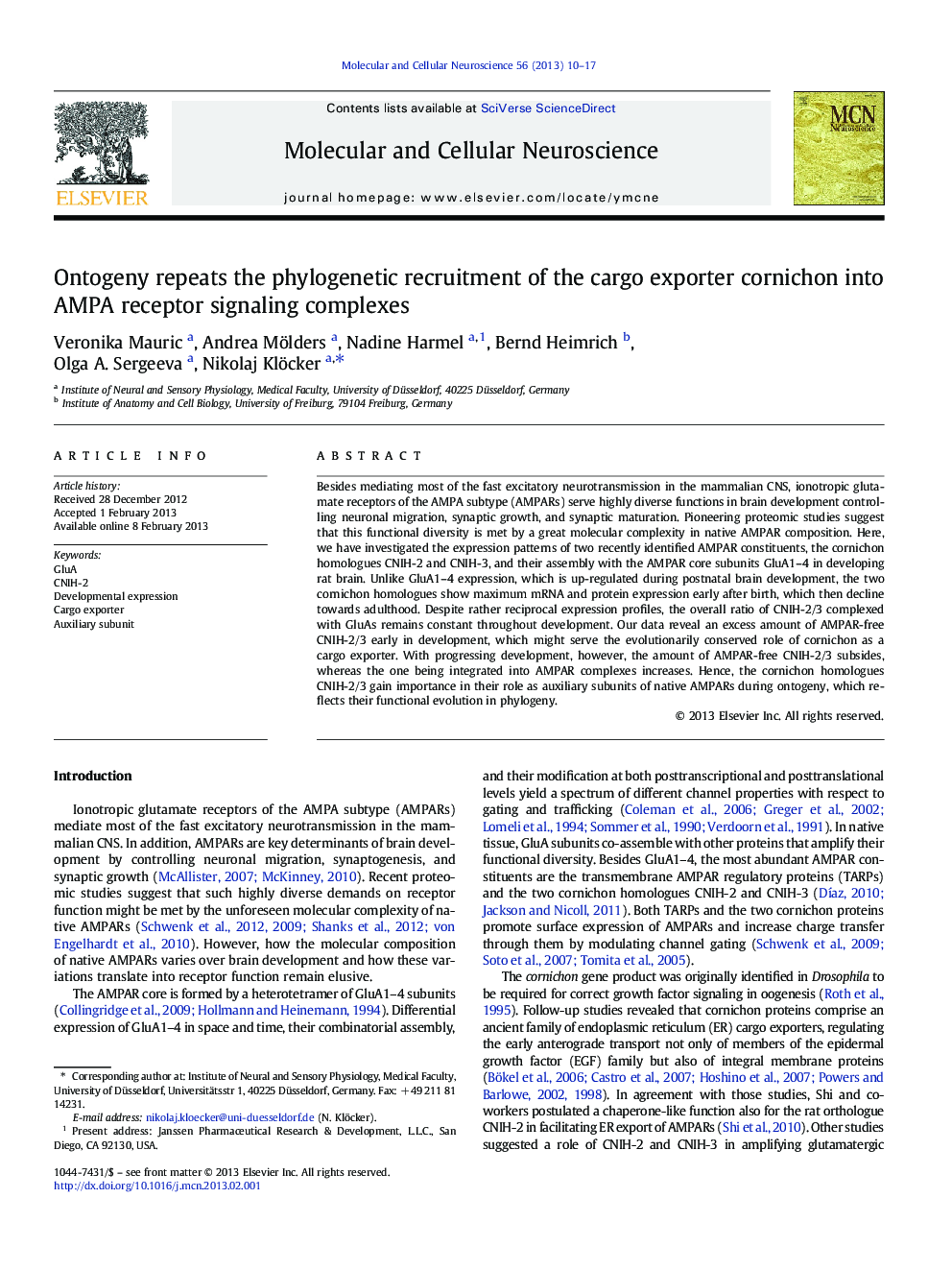| Article ID | Journal | Published Year | Pages | File Type |
|---|---|---|---|---|
| 8478642 | Molecular and Cellular Neuroscience | 2013 | 8 Pages |
Abstract
Besides mediating most of the fast excitatory neurotransmission in the mammalian CNS, ionotropic glutamate receptors of the AMPA subtype (AMPARs) serve highly diverse functions in brain development controlling neuronal migration, synaptic growth, and synaptic maturation. Pioneering proteomic studies suggest that this functional diversity is met by a great molecular complexity in native AMPAR composition. Here, we have investigated the expression patterns of two recently identified AMPAR constituents, the cornichon homologues CNIH-2 and CNIH-3, and their assembly with the AMPAR core subunits GluA1-4 in developing rat brain. Unlike GluA1-4 expression, which is up-regulated during postnatal brain development, the two cornichon homologues show maximum mRNA and protein expression early after birth, which then decline towards adulthood. Despite rather reciprocal expression profiles, the overall ratio of CNIH-2/3 complexed with GluAs remains constant throughout development. Our data reveal an excess amount of AMPAR-free CNIH-2/3 early in development, which might serve the evolutionarily conserved role of cornichon as a cargo exporter. With progressing development, however, the amount of AMPAR-free CNIH-2/3 subsides, whereas the one being integrated into AMPAR complexes increases. Hence, the cornichon homologues CNIH-2/3 gain importance in their role as auxiliary subunits of native AMPARs during ontogeny, which reflects their functional evolution in phylogeny.
Related Topics
Life Sciences
Biochemistry, Genetics and Molecular Biology
Cell Biology
Authors
Veronika Mauric, Andrea Mölders, Nadine Harmel, Bernd Heimrich, Olga A. Sergeeva, Nikolaj Klöcker,
